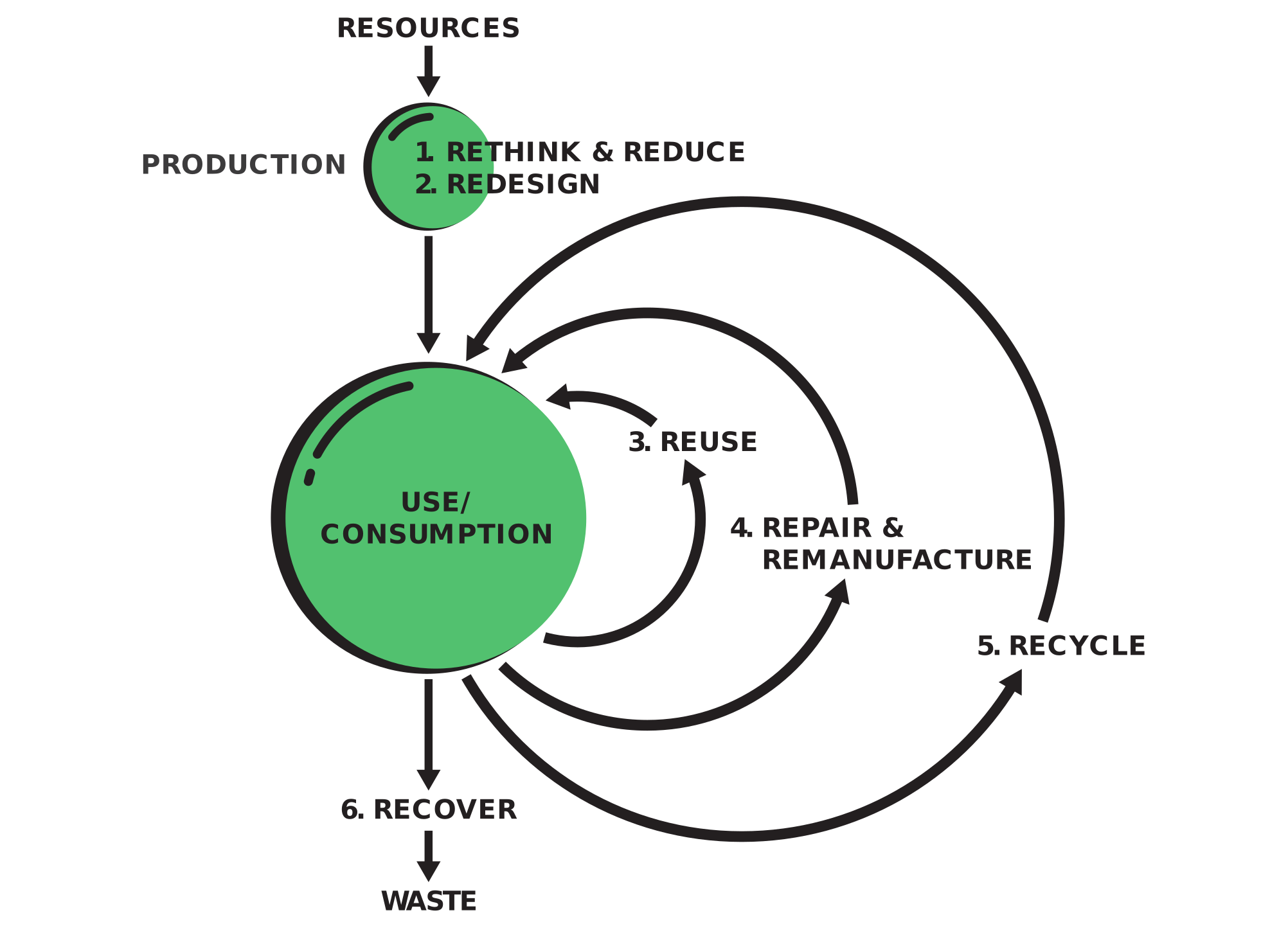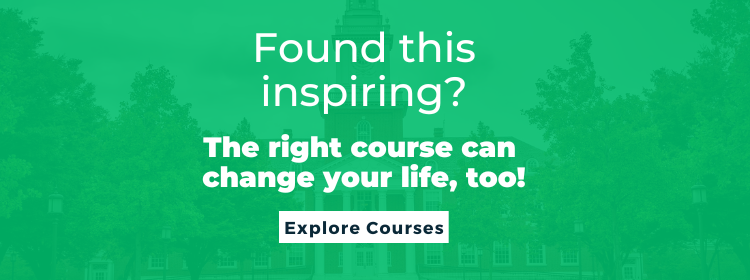What is a Circular Economy and How Does it Work?

This article was originally published by the Network for Business Sustainability. It was written by Heeseung Kim
The circular economy supports sustainability by enabling economic growth without greater resource use.
Companies sold 1.52 billion smartphones worldwide in 2019. Meanwhile, almost half of American smartphone users reported upgrading their phones before the phones stopped working. And almost all discarded phones go to landfills.
This is a common pattern in our current “linear economy,” where we take materials to make something and then get rid of it when we’re done using it. The linear economy is a system that assumes that our supply of resources is infinite and that the Earth can absorb all our waste.
This approach has real costs, for businesses and the planet. Those landfilled phones, for example, are full of valuable materials. A tonne of iPhones delivers 300 times more gold than a tonne of gold ore. The linear economy doesn’t capture that value. Instead, the old phones become waste and companies manufacture new phones in a resource- and energy-intensive process.
A circular economy changes this model.
What are the key elements of the Circular Economy?
The circular economy keeps resources — such as products, materials, and energy — in the economic system for as long as possible and at the “highest value” possible.

Products gain value as they’re manufactured, through the input of materials, labour and energy. Finding ways to reuse a product keeps much of that value. Recycling a product captures less value, because it requires energy and some materials break down in the recycling process.
The graphic shows different approaches to the circular economy. Pursuing a circular economy first requires changing the way we think about products (Steps 1 and 2 in the graphic), by changing product design and production. Businesses need to think less about increasing revenues by selling more product, and more about selling longer-life and higher-quality products.
Once products are in use, the priority becomes reusing them, then repairing or remanufacturing them, and then recycling.
Circularity means that instead of materials moving from resource extraction to production to waste, the waste becomes feedstock for new products. Resources are recovered and reused and waste is reduced.
The circular economy can operate:
-
Within a single company: Tim Hortons converts its disposable cups into takeout trays at some locations.
-
Across businesses: Plant Chicago cultivates the local circular economy among small businesses in southwest Chicago by providing guidance and community building.
-
Across entire cities or even countries. The Netherlands aims to achieve a country-wide circular economy by 2050.
Why is the Circular Economy important?
The circular economy is not a new concept, but it has gotten a lot of attention in recent years as climate change, waste, and resource scarcity become increasingly urgent. One example of our environmental impact: human-made materials on Earth now weigh as much as all the living things on the planet. The circular economy can address all these concerns.
The circular economy also promises new economic gains. Reimagining “waste” as a resource shows how much value is lost in the linear economy. Today, only 8.6% of resources that enter the global economy are cycled back into it. The rest goes the route of the linear economy, discarded and often replaced with new items.
When you find ways to recover resources, such as by recycling, composting, or remanufacturing, that’s value that’s saved and returned to your business. Companies have seen real benefits from making products from waste.
A circular economy makes economic growth possible without the reliance on limited resources.
Does the Circular Economy work?
The circular economy isn’t an automatic or guaranteed fix for sustainability challenges. Circularity is hard because it is complex. For one company to reuse another’s waste, for example, requires good communication, consistent material availability, and collaboration among unlikely partners. Complexity increases higher on the value scale, e.g. with reuse or remanufacturing vs. recycling.
The good news: Many organizations exist to help facilitate collaboration and collective action. These include the Platform for Accelerating the Circular Economy (PACE), the Ellen MacArthur Foundation, and Closed Loop Partners’ Center for Circular Economy.
The circular economy means major changes for other parts of society as well as business. Consumers need to fully embrace the ideas of reducing purchases, reusing products and, when those aren’t possible, recycling. We also need a culture-wide rethinking of the way we design systems to handle resource and the ways we build networks and partnerships.
But, there is good news. There’s work already being done across industries.
Let’s go back to phones. Their life cycle is changing. Soon, people may no longer buy a phone, upgrade it every year or two, and get rid of the old one (or leave it in a drawer somewhere). Innovators like Fairphone have created modular phones designed to be repaired at home; now, they’re re-envisioning their phones as a service, providing hardware, software, and customer support over the use of the phone. This is only one example of the kind of creative thinking necessary to transition to a livable future, and it’s just the beginning.
About the Author
Heeseung Kim is a dual-degree graduate student between University of Michigan’s Ross School of Business and the School for the Environment and Sustainability. She is committed to making consumer products more sustainable using a science-based approach to achieve real impact. Her end goal is to empower consumer decision-making that’s good for people and the planet alike. Prior to entering University of Michigan, Heeseung worked in digital media, focusing on the health and wellness space, which drives her approach to sustainable and inclusive food systems and consumer goods. Follow her at Twitter.com/heeseung
Review of this article was provided by Dr. Pratima (Tima) Bansal, Executive Director (and Founder) of the Network for Business Sustainability (www.nbs.net) and Professor of Strategy and Sustainability at the Ivey Business School (Canada).
About the Series
The Network for Business Sustainability “Basics” series provides essential knowledge about core business sustainability topics for business leaders thinking ahead. “The Basics” provides essential knowledge about core business sustainability topics. All articles are written or reviewed by an expert in the field. The Network for Business Sustainability builds these articles for business leaders thinking ahead.
If you’d like to explore a content collaboration with Emeritus or leave a review, write to us at content@emeritus.org





